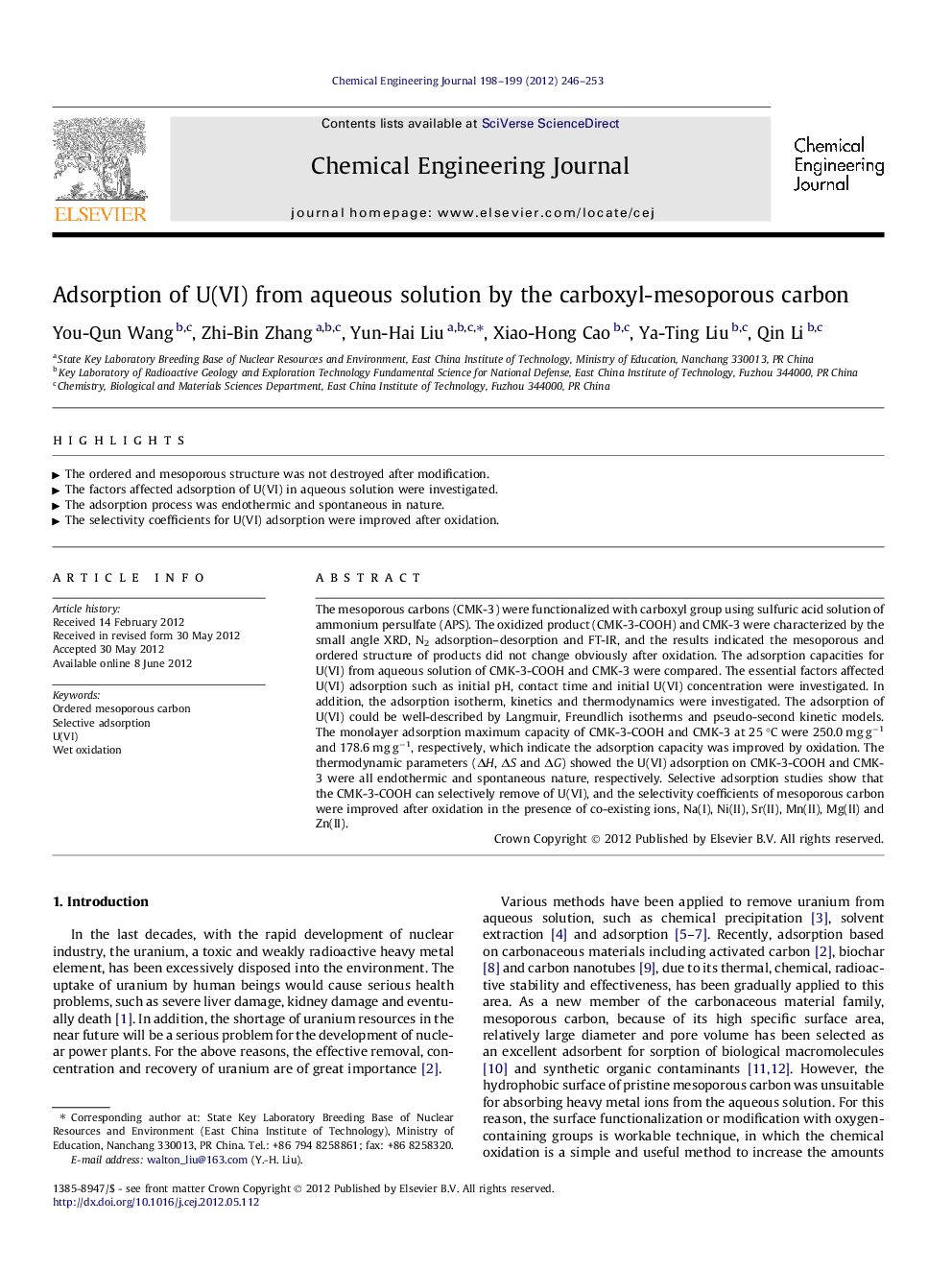| Article ID | Journal | Published Year | Pages | File Type |
|---|---|---|---|---|
| 149631 | Chemical Engineering Journal | 2012 | 8 Pages |
The mesoporous carbons (CMK-3) were functionalized with carboxyl group using sulfuric acid solution of ammonium persulfate (APS). The oxidized product (CMK-3-COOH) and CMK-3 were characterized by the small angle XRD, N2 adsorption–desorption and FT-IR, and the results indicated the mesoporous and ordered structure of products did not change obviously after oxidation. The adsorption capacities for U(VI) from aqueous solution of CMK-3-COOH and CMK-3 were compared. The essential factors affected U(VI) adsorption such as initial pH, contact time and initial U(VI) concentration were investigated. In addition, the adsorption isotherm, kinetics and thermodynamics were investigated. The adsorption of U(VI) could be well-described by Langmuir, Freundlich isotherms and pseudo-second kinetic models. The monolayer adsorption maximum capacity of CMK-3-COOH and CMK-3 at 25 °C were 250.0 mg g−1 and 178.6 mg g−1, respectively, which indicate the adsorption capacity was improved by oxidation. The thermodynamic parameters (ΔH, ΔS and ΔG) showed the U(VI) adsorption on CMK-3-COOH and CMK-3 were all endothermic and spontaneous nature, respectively. Selective adsorption studies show that the CMK-3-COOH can selectively remove of U(VI), and the selectivity coefficients of mesoporous carbon were improved after oxidation in the presence of co-existing ions, Na(I), Ni(II), Sr(II), Mn(II), Mg(II) and Zn(II).
► The ordered and mesoporous structure was not destroyed after modification. ► The factors affected adsorption of U(VI) in aqueous solution were investigated. ► The adsorption process was endothermic and spontaneous in nature. ► The selectivity coefficients for U(VI) adsorption were improved after oxidation.
